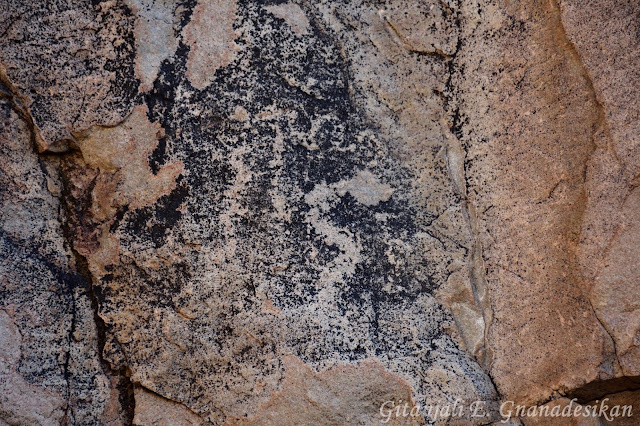I meant to get this blog post up several days ago but was distracted by the terribleness of the week. Nevertheless, both spending time outside and looking through photos of nature are great coping strategies and distractions from doom scrolling, so here it goes (finally).
Almost two weeks ago now, I hiked Wasson Peak, which at 4,687 ft (~1430 m) is the tallest peak in the Tucson mountains, although the Tucsons are the shortest of the mountain ranges surrounding the city of Tucson. We started on King's Canyon Wash (the site of beautiful petroglyphs), then took King's Canyon Trail up to the peak, and then back down via Hugh Norris, Sendero Esperanza, and Gould Mine trails.
Further along, there were several sections of the trail with stunning lichen assemblages. Okay, I'll admit, I have a soft spot for lichen. Sorry to bore you if you're not a lichen fan... but really,
you should be.
This is Wasson peak, viewed from just downhill to the north. It's not a particularly impressive peak itself, but it has magnificent panoramic views.
This is the view looking southeast across Tucson, including all the surrounding mountains, from the Catalinas in the north (left-most), through the Rincons, the Santa Ritas (middle, background), and the Baboquivari and Quinlans (right), with most of the rest of the Tucson mountain range in the foreground.
Zooming in a bit on the right side of this view, there's a nice clear view of Gate's pass, which is the main road that crosses the mountain ridge and a favorite spot for sunset viewing.
From the summit you can also spot
Old Tucson at the foot of Gate's pass. Only recently closed to the public, Old Tucson Studios was both a theme park and the shooting location for hundreds of films and TV shows for decades, especially--but not exclusively--for Westerns.
Here's one more view off to the south, with some high desert vegetation in the foreground, including ocotillo (
Fouquieria splendens), cholla (
Cylindropuntia, I'm not going to guess the species,
especially given how much they hybridize), and agave (maybe
Agave schotti?).
And this is the view looking northwest from just beneath the summit.
After some exploring in Google Earth, I think I've identified these as Panther and Safford Peaks. And just to the left of them is a limestone quarry. Here's a fun--if a bit sad--piece of local trivia for you: just to the north is "Twin Peaks Rd" (also an exit off of I-10), named for a now non-existent pair of peaks. Well, one of them is still there, but the other has
since been mined away for cement.
And even further into the distance you can just make out Picacho Peak. In addition to be a visually striking peak, Picacho was home to the
westernmost battle of the civil war. It's right off of I-10, so I've driven past it many times, but never (yet) stopped.
We saw a few birds on the hike, including what I think was a northern harrier hawk (Circus hudsonius, not pictured). While we lunched on the peak, though, we were visited by two different species of wrens. First, the cactus wren (Campylorhynchus brunneicapillus) with it's darker head, white stripe, and speckled appearance. Here's one, seen first perching--quite appropriately--on a cholla.
And next, the rock wren (Salpinctes obsoletus), which is much paler.
This is another species of cholla, sometimes fondly known as teddy-bear cholla (Cylindropuntia bigelovii) due to it's fuzzy appearance, although of course it's far from soft.
Since this was, after all, Saguaro National Park, I'll leave you with a lovely old saguaro, surrounded by hundreds of younger individuals in all directions.
This was definitely a hike I'd both recommend and happily do again sometime soon!






























































